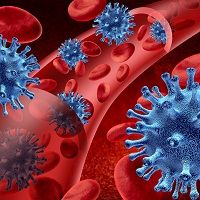Article
Viruses: Newest Culprits of Inflammatory Bowel Disease?
Author(s):
Researchers at the Washington University School of Medicine, St. Louis, WA, had recently discovered the correlation between inflammatory bowel disease (IBD) and the steady increase in the diversity of viruses.

Researchers at the Washington University School of Medicine, St. Louis, WA, had recently discovered the correlation between inflammatory bowel disease (IBD) and the steady increase in the diversity of viruses.
While prior studies had highlighted the definitive relationship between IBD and decreased bacteria diversity in the gut, the Washington University scientists noted that IBD patients had a myriad of viruses lurking in their digestive systems compared with the healthy study subjects.
The new research, published in the journal Cell, is the first to associate disease with changes in the virome, viruses located in the human body and their genes. The study results raise the possibility that viruses likely hold unrecognized roles in obesity and diabetes as well as within the 2 most common IBD conditions, Crohn’s disease (CD) and ulcerative colitis (UC).
Herbert W. Virgin IV, MD, PhD, Edward Mallinckrodt Professor of Pathology and head of the Department of Pathology and Immunology, and the study’s lead author, studied 3 groups of patients afflicted with CD or UC in Chicago, Boston, and the United Kingdom. In each group, they team compared the viral DNA purified from the participants’ fecal matter with viral DNA samples from the fecal matter of healthy patient variables.
“Much of the increased viral diversity in participants with IBD was in the form of bacteriophages, which are viruses that infect bacteria and can incorporate themselves into the bacteria’s genetic material,” said Virgin.
Changes in the gut that eliminate bacteria in inflammatory bowel diseases may unleash bacteriophages in the dying bacteria. Additionally, the introduction of a new bacteriophage to the gut, perhaps through the foods in a person’s diet, could activate a reaction in the digestive system that causes the disorders. It’s also possible that a combination of these mechanisms may contribute.
However, to develop safe and effective treatment methods, scientists need to further study the relationship and interaction between the gut microbiome and virome.
“This is the tip of the iceberg. A significant portion of the viral DNA we identified in these patients is unfamiliar to us — it comes from newly identified viruses we don’t know much about. We have a great deal of groundwork to do, including sequencing the genetic material of these viruses and learning how they interact with the gut and gut bacteria, before we can determine if changes in the virome cause these conditions or result from them.”
Developments of animal models of IBD diseases are currently underway to potentially determine whether human, bacterial or viral genes, or even an assortment of all 3, are the foundation for the conditions.





